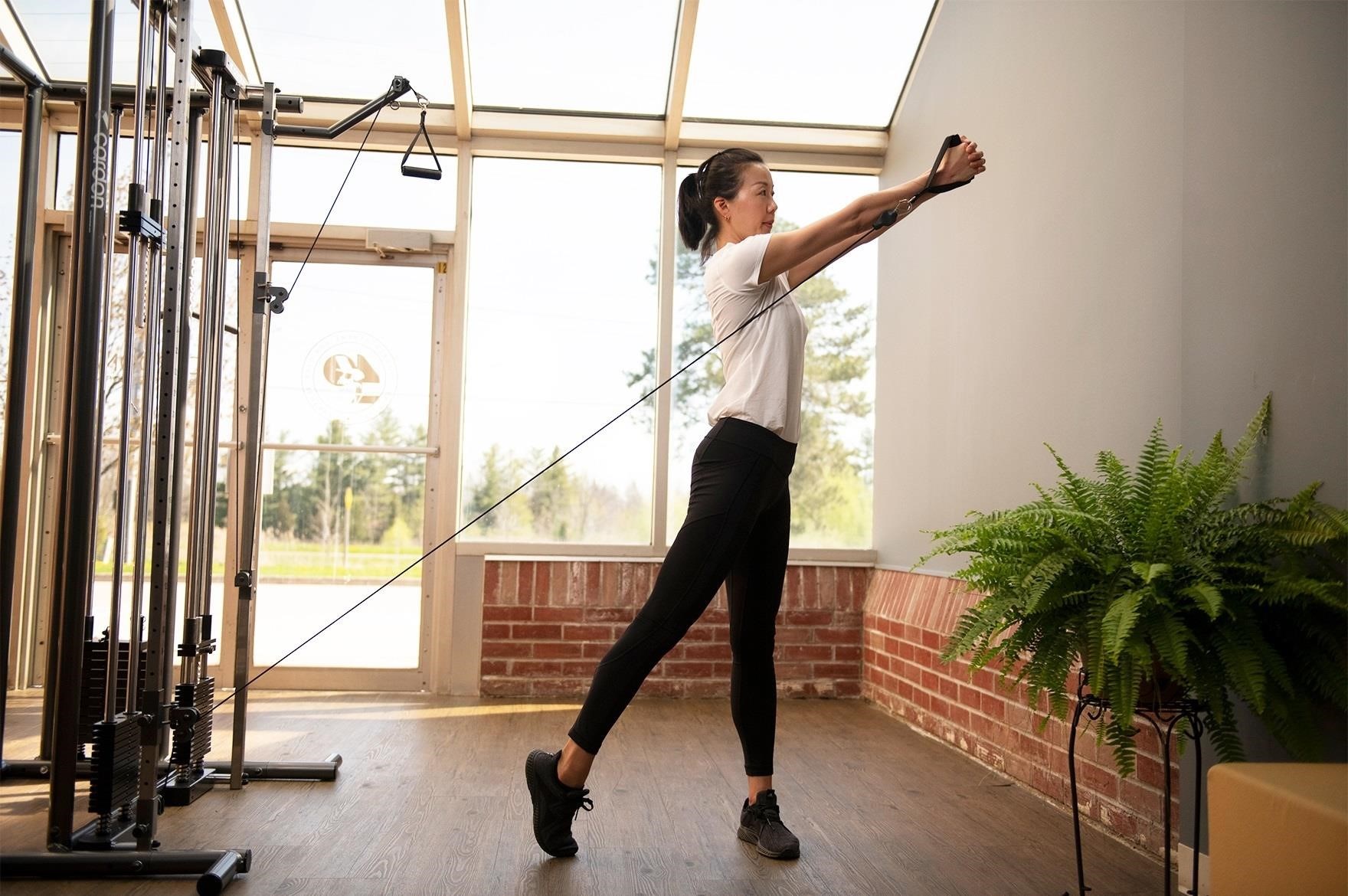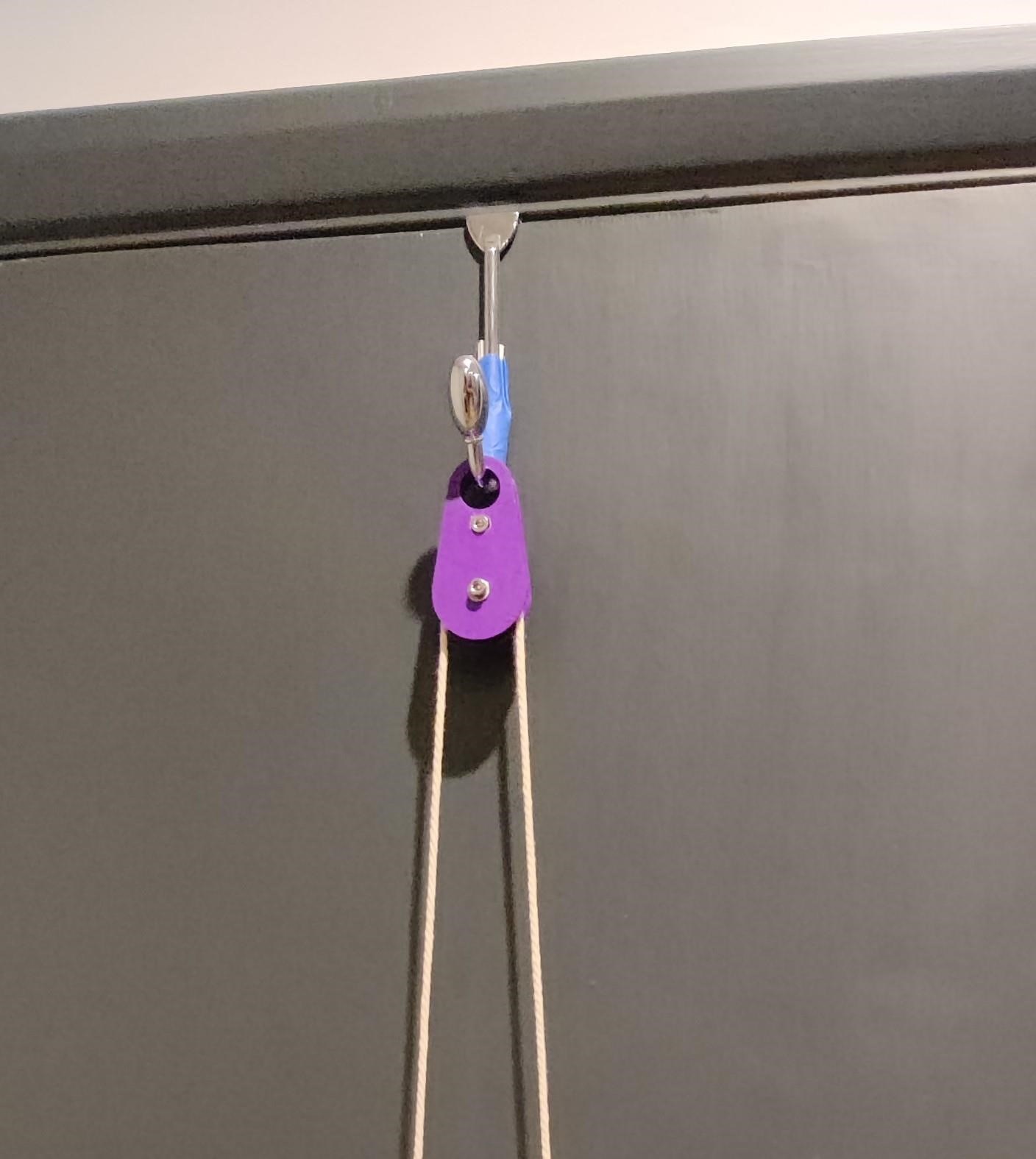
Shoulder Pulley Exercises⁚ A Comprehensive Guide
This guide offers a detailed exploration of shoulder pulley exercises, encompassing various techniques and their applications in rehabilitation and strengthening. Discover how these exercises aid in restoring range of motion, improving stability, and enhancing overall shoulder health. Learn about different pulley systems and choosing the right one for your needs, from passive range of motion to advanced strengthening exercises.
Shoulder pulley systems are invaluable tools in physical therapy, designed to facilitate rehabilitation and strengthening of the shoulder joint. These systems utilize a pulley mechanism and weighted resistance to provide controlled movement, assisting with range of motion (ROM) exercises. They are particularly beneficial for individuals recovering from shoulder injuries, surgeries, or those experiencing limited mobility due to conditions like rotator cuff tears or arthritis. The controlled nature of pulley exercises minimizes stress on the shoulder, allowing for gradual improvement in strength and flexibility. The simplicity of the system makes it suitable for home use under the guidance of a physical therapist.
Types of Shoulder Pulley Devices Available
A variety of shoulder pulley systems cater to different needs and preferences. Simple, over-the-door models offer a convenient and affordable option for home use, requiring minimal setup. More advanced systems might feature adjustable weights, allowing for progressive resistance training as strength improves. Some incorporate padded handles for increased comfort during exercises, while others may have longer cords for greater flexibility in movement. The choice depends on individual requirements and the specific exercises prescribed by a physical therapist. Consider factors like portability, adjustability, weight capacity, and the overall ease of use when selecting a suitable device. High-quality materials ensure durability and longevity.
Choosing the Right Pulley System for Your Needs
Selecting the appropriate shoulder pulley system hinges on several key factors. Consider the severity of your injury or condition; a simple system might suffice for mild discomfort, while a more robust, adjustable model may be necessary for post-surgical rehabilitation or significant muscle weakness. Your physical therapist’s recommendations are crucial; they can assess your specific needs and prescribe exercises tailored to your capabilities. Evaluate the system’s ease of use; simple assembly and intuitive operation are beneficial, especially for home use. Durability and material quality are also important considerations; a well-constructed system will withstand regular use and provide reliable support throughout your recovery process. Finally, factor in your budget and choose a system that aligns with your financial capabilities.

Basic Shoulder Pulley Exercises
This section details fundamental exercises using a pulley system to restore shoulder range of motion and initiate strengthening. These exercises form the foundation for a comprehensive rehabilitation program.
Passive Range of Motion Exercises
Passive range of motion (PROM) exercises, utilizing a shoulder pulley system, are crucial in early rehabilitation. These exercises involve an external force, such as a therapist or the pulley’s weight, moving the shoulder joint through its range of motion without any active effort from the patient. This is particularly beneficial post-surgery or during periods of acute pain, where active movement is restricted. PROM helps maintain joint mobility, preventing stiffness and contractures. The pulley system allows for controlled and gentle movements, reducing the risk of re-injury or increased pain. Proper technique is essential; the therapist or caregiver must ensure smooth, slow movements, always respecting the patient’s pain tolerance. The goal is to gradually increase the range of motion without causing discomfort. Regular PROM sessions, guided by a healthcare professional, are vital in the initial phases of shoulder recovery and injury prevention.
Active Assisted Range of Motion Exercises
Active assisted range of motion (AAROM) exercises represent a progression from passive ROM, gradually increasing patient involvement. Using a shoulder pulley system, the patient actively participates in moving their shoulder, assisted by the pulley’s counterbalance. This promotes muscle activation and improves neuromuscular control while still minimizing stress and pain. AAROM exercises help build strength and endurance in the shoulder muscles, preparing the joint for fully active movements. The level of assistance provided by the pulley can be adjusted as the patient’s strength improves. Proper guidance from a physical therapist is crucial to ensure correct technique and prevent overexertion. AAROM exercises are a bridge between passive mobilization and fully active exercises, facilitating a smoother transition towards independent shoulder movement and functional recovery. Consistent performance and gradual progression are key to achieving optimal results.
Strengthening Exercises with Pulley System
Once sufficient range of motion is achieved, strengthening exercises using a pulley system become crucial. These exercises target specific shoulder muscles, building strength and endurance. By adjusting the weight and resistance provided by the pulley, the intensity can be tailored to individual needs and capabilities. Exercises focus on various movements such as flexion, extension, abduction, adduction, internal, and external rotation. The pulley’s controlled resistance allows for consistent and gradual strengthening, minimizing the risk of re-injury. It’s vital to maintain proper form and avoid jerky movements to prevent strain. As strength increases, resistance can be progressively increased to continue challenging the muscles and promoting further gains. The pulley system provides a versatile and effective means of targeting the shoulder muscles, fostering functional strength and improving overall shoulder stability and performance. Regular and consistent use is key to achieving optimal results.
Advanced Shoulder Pulley Exercises
Progressing to advanced exercises enhances rotator cuff strength, improves shoulder stability, and increases flexibility. These exercises often incorporate more complex movements and higher resistance levels, building upon foundational techniques. Consult a physical therapist for guidance.
Strengthening Rotator Cuff Muscles
The rotator cuff, a group of four muscles and their tendons, stabilizes the shoulder joint. Weakness in these muscles can lead to instability and pain. Pulley exercises offer a controlled way to strengthen them. External rotation exercises, using the pulley system, target the infraspinatus and teres minor muscles, crucial for shoulder stability. Internal rotation exercises, also performed with the pulley, strengthen the subscapularis muscle, vital for inward shoulder movement. Careful progression is key; start with lighter weights and fewer repetitions, gradually increasing as strength improves. Maintaining proper form is essential to avoid injury. A physical therapist can guide you on appropriate exercises and resistance levels for your specific needs and recovery stage. Remember to listen to your body and stop if you experience pain.
Improving Shoulder Stability
Shoulder instability, a common issue, often stems from weakened muscles surrounding the joint. Pulley exercises provide a targeted approach to enhance stability. Exercises focusing on scapular (shoulder blade) control are particularly beneficial. These exercises often involve slow, controlled movements, emphasizing proper form over speed or weight. The pulley system allows for precise control of resistance, making it ideal for strengthening the muscles responsible for stabilizing the shoulder blade, such as the trapezius and rhomboids. This controlled resistance helps to improve neuromuscular control, enhancing the brain’s ability to coordinate muscle activation for optimal stability. Combining these exercises with other strengthening and range-of-motion exercises creates a comprehensive approach to improving shoulder stability and reducing the risk of injury or re-injury.
Increasing Shoulder Flexibility
Limited shoulder flexibility can hinder daily activities and athletic performance. Pulley systems offer a unique advantage in improving flexibility through controlled movements. Passive range-of-motion exercises, where the therapist or a caregiver moves the arm, are often the starting point. This helps to gently stretch the shoulder joint and surrounding tissues without causing pain. As strength and comfort improve, active-assisted range-of-motion exercises can be introduced, where the individual uses the pulley system to assist in moving their arm through a greater range of motion. The controlled resistance offered by the pulley allows for a progressive increase in flexibility. Focusing on specific movements such as flexion (forward movement), extension (backward movement), abduction (away from the body), and adduction (towards the body) helps to address any limitations in specific planes of motion. Regular and consistent use of the pulley system for these exercises can significantly enhance shoulder flexibility over time.

Safety Precautions and Considerations
Prioritize proper posture and technique to prevent injuries. Manage pain effectively, progressing gradually. Consult a physical therapist for personalized guidance and exercise programs.
Proper Posture and Technique
Maintaining correct posture is crucial for effective and safe shoulder pulley exercises. Begin by standing tall with your feet shoulder-width apart, ensuring a stable base. Avoid hunching or leaning, keeping your back straight and your core engaged to support your spine. The pulley system should be positioned at a height that allows for a comfortable and controlled range of motion. Grasp the handles firmly, but not tensely, ensuring a relaxed grip to avoid unnecessary strain. During the exercise, focus on smooth, controlled movements, avoiding jerky motions that could cause injury. Pay close attention to your body’s signals; stop if you experience any sharp or unusual pain. Remember that proper form is paramount for maximizing the benefits and minimizing the risks of these exercises. Consistent practice and attention to detail will lead to improved technique and better results.
Pain Management and Progression
Managing pain during shoulder pulley exercises is essential for safe and effective rehabilitation. Start with gentle movements and low resistance, gradually increasing the intensity as your pain subsides and strength improves. Listen to your body and stop if you experience any sharp or significant pain. Ice or heat therapy can help manage discomfort before and after exercise sessions. Over-the-counter pain relievers, such as ibuprofen or acetaminophen, may provide additional relief, but always consult your doctor before starting any medication. A slow and steady progression is key. Don’t rush the process; focus on consistent, controlled movements rather than pushing yourself too hard too soon. Regular communication with your physical therapist or doctor is crucial to adjust the exercise program based on your progress and pain levels. Remember that pain is a warning sign; never ignore it.
Consulting with a Physical Therapist
Before starting any shoulder pulley exercise program, consulting a physical therapist is highly recommended. They can assess your specific condition, determine the appropriate exercises, and guide you through proper techniques to prevent injuries. A physical therapist will create a personalized plan based on your individual needs and goals, ensuring safe and effective progress. They can also address any underlying issues contributing to your shoulder pain or dysfunction. Regular check-ins with your physical therapist allow for adjustments to the program as you progress, ensuring you are challenged appropriately while avoiding setbacks. Their expertise in rehabilitation and pain management helps optimize your recovery and minimizes the risk of reinjury. They provide valuable guidance on proper posture, pain management strategies, and exercise progression, ultimately leading to a faster and more complete recovery.